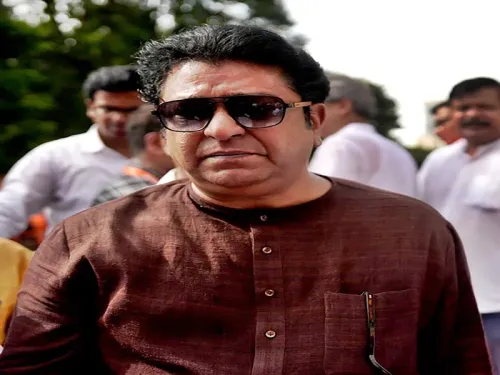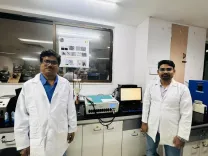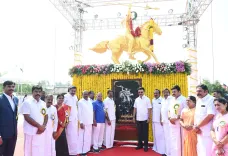Is India Poised to Become the Premier Global Hub for Aircraft MRO Services?

Synopsis
Key Takeaways
- India's MRO market is growing rapidly, projected to reach 4 billion US dollars by 2031.
- Localizing services is expected to save airlines costs and reduce turnaround times.
- The new MRO facility will handle up to 300 engines annually.
- India aims to localize 90 percent of LEAP engine maintenance by 2030.
- Government initiatives have increased MRO facilities from 96 to 166 in a decade.
Hyderabad, Nov 26 (NationPress) Civil Aviation Minister K. Ram Mohan Naidu expressed optimism on Wednesday that with ongoing policy reforms, robust industry collaborations, and a burgeoning skilled workforce, India is destined to become the top global choice for aircraft maintenance, repair and overhaul services.
During the inauguration of French aerospace giant Safran’s largest Maintenance, Repair and Overhaul (MRO) facility for the CFM International LEAP engines, he stated that India has emerged as the fastest-growing MRO market, growing at a rate three times that of the global average.
"Our MRO market is expected to surge to 4 billion US dollars by 2031, with an impressive growth rate of 8.9 percent, far surpassing the global growth rate of 4.8 percent. This presents an unparalleled opportunity for global engine manufacturers to collaborate with India’s rapidly evolving aviation landscape," he remarked.
Naidu pointed out that over the past 11 years, India’s aviation sector has made significant strides by doubling the number of airports, aircraft, and passenger traffic.
Driven by increasing passenger demand, the nation’s commercial aircraft fleet has expanded at a Compounded Annual Growth Rate (CAGR) of 7.6 percent, which is three times the global average. This surge alone necessitates over 2,500 Safran engines to power the incoming aircraft, he noted.
The Union Minister characterized the opening of the MRO facility as a pivotal moment in India’s journey to becoming a global aviation services hub.
He emphasized that this facility positions India on a trajectory to become a leading MRO hub by 2030. Once fully operational, it will accommodate up to 300 engines annually, which currently have to be sent abroad for servicing.
"The inauguration of the world’s largest engine MRO facility by the Prime Minister signifies profound trust and confidence global OEMs now have in India’s engineering prowess and infrastructure capabilities," he stated.
"The establishment of Safran’s largest LEAP engine MRO in India marks a significant leap in capability, capacity, and India’s credibility as an MRO destination. With this onshore facility, Safran Aircraft Engine Services India is poised to drive substantial value creation in the Indian MRO sector," he continued.
The Civil Aviation Minister declared that this facility represents a critical milestone in fulfilling the Prime Minister’s vision of Atmanirbhar Bharat by localizing up to 90 percent of LEAP engine maintenance by 2030.
He asserted that this will drastically reduce reliance on foreign repair centers, cut turnaround times, and lower operational costs for Indian airlines, ultimately allowing airlines to pass cost savings on to Indian passengers.
Naidu noted that with the MRO sector receiving a substantial boost, India will fortify its aviation ecosystem, which is expected to witness the addition of 3,000 more aircraft by 2047.
He expressed his belief that under the leadership of Prime Minister Narendra Modi and his vision for enhancing ease of doing business, India is swiftly becoming a global center for aircraft engine maintenance.
“Following 'Make in India' and 'Train in India', 'Maintain in India' is now becoming another vital aspect of our aviation growth narrative. With an investment of 150 million, a global engine OEM is establishing capabilities we see today at Safran. It is estimated that by 2028, about 25 percent of SAFRAN’s global LEAP MRO is expected to originate from India,” he added.
The minister outlined the proactive measures the Central government has implemented to stimulate MRO development in the country.
He claimed that these initiatives have resulted in the total number of MRO facilities increasing from 96 in 2014 to 166 by 2025.
Nevertheless, he acknowledged that challenges remain. "Today, import dependence for online maintenance is only 10-20 percent, but for components, airframes, and engines, reliance still exceeds 60 percent. Indian airlines continue to send aircraft abroad to locations like Singapore, Malaysia, and Indonesia for heavy maintenance, which is both costly and time-consuming. Given that engine overhauls alone account for 45 percent of the MRO market, I see unique advantages in developing India as an MRO hub, potentially saving up to 15 billion dollars in foreign exchange over the next decade," he concluded.









